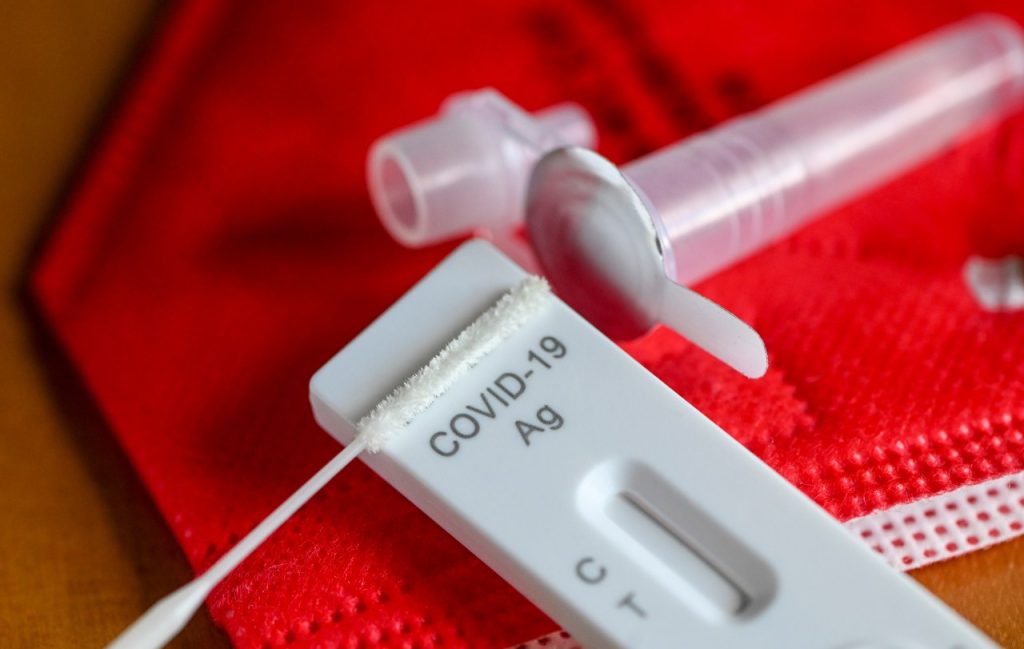Illustration – 14 September 2023, Berlin: A red FFP-2 mask carries an antigen test to detect Covid-19 for self-testing. For a long time, Corona was no longer a big problem. Now the number of infections is increasing again. Photo: Jens Karaene/dpa (Photo by Jens Karaene/picture alliance via Getty Images)
Concentrations of coronavirus in California’s wastewater continue to increase, according to the latest data. Centers for Disease Control and Prevention.
of Golden State It is one of 21 states in this category. The previous week it was 7.
Other states at the “very high” level are Alaska, Colorado, Connecticut, Florida, Hawaii, Idaho, Louisiana, Maryland, Minnesota, Nevada, New Hampshire, New Mexico, North Carolina, Oregon, Texas, Utah, Vermont, Washington, West Virginia and Wyoming.
Washington DC falls into that category.
Two new The COVID variant, known as FLiRTaccounts for more than half of the recent increase in cases.
Los Angeles County, the nation’s most populous county, is also seeing elevated levels of coronavirus in wastewater.
The most recent data available is County Health Department It shows COVID levels in the county during the 10-day period ending July 17 were at 36% of last winter’s peak, a significant increase from the data set through July 10, when the county was at just 27%.
The average number of daily cases also increased, from 307 in the week ending July 10 to 359 in the week ending July 17.
Nationwide, concentrations of COVID-19 in wastewater have been listed as “high” for two consecutive weeks, according to the CDC, but these numbers are subject to change as more data comes in.
Here’s what you can do to protect yourself:
vaccine
Doctors continue to urge people, especially those in high-risk groups, to consider getting the latest vaccination.
In California, just 36% of people 65 and older have received the latest vaccine doses, which first became available in September.
The Centers for Disease Control and Prevention is recommending everyone aged 6 months or older get the first dose of the updated vaccine, and a second dose is also recommended for people aged 65 and older if it’s been at least four months since their last shot. LA Times.
test
COVID tests should be able to detect the FLiRT strain, said Scott Roberts, an infectious disease specialist at the Yale University School of Medicine.
Experts recommend that people who feel unwell get tested daily. After the onset of symptoms, consider getting a rapid COVID test once a day for 3-5 consecutive days. It is important to keep in mind that rapid COVID-19 tests may take some time to produce a positive result after the onset of symptoms.
What to do if you get sick
In their most recent guidelines, published in January, health officials still recommend that people who test positive for COVID-19 wear a mask, avoid contact with people at high risk of severe illness and seek medical attention if necessary.
As of January 9, people who tested positive for COVID-19 but had mild symptoms, were not taking medication, and had no fever: After one day of quarantine, you can return to school or work.


